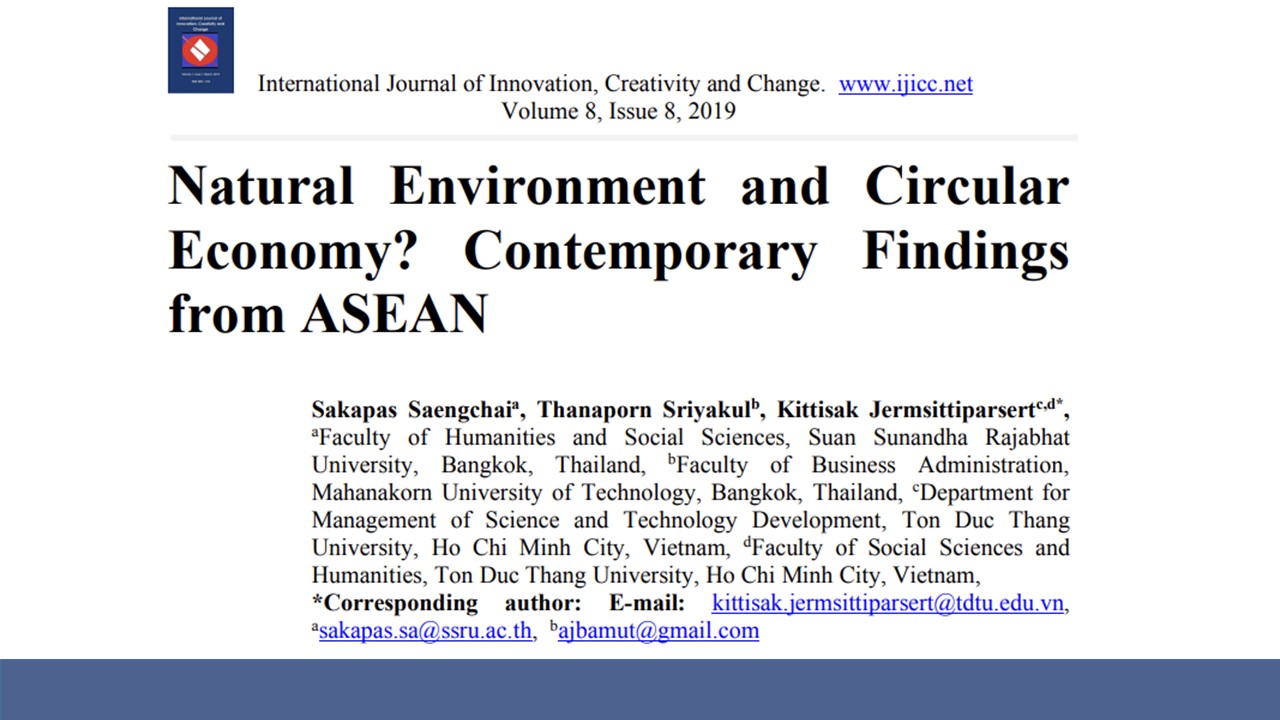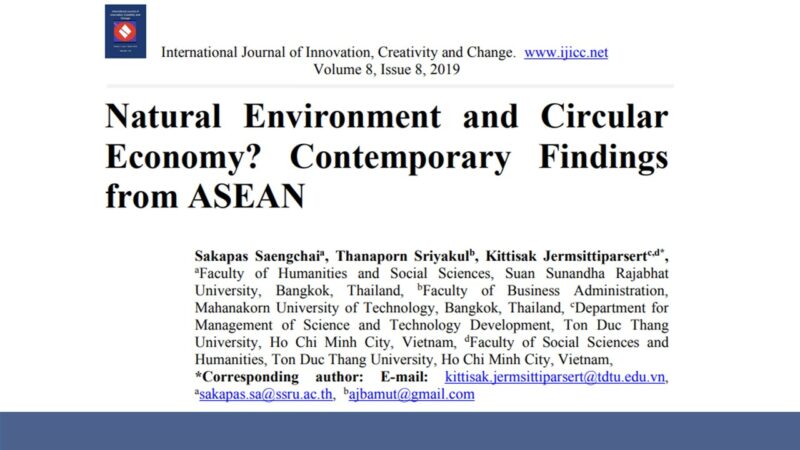Research Article: Natural Environment and Circular Economy? Contemporary Findings from ASEAN


In this study, the ASEAN region’s circular economy is compared to the region’s natural ecosystem. The idea of the natural environment is used to reflect on elements like carbon emission, renewable energy consumption, total natural resource rent, and plant species for better understanding.
The literature on the circular economy and environment for both developed and developing countries has been significantly and recently updated by this study, it may be said. The results of the study also provide a great grasp of how environmental factors and CE relate to ASEAN. Researchers, academicians, and students in the pertinent domains are strongly encouraged to use this research as supporting documentation.
The generation of municipal garbage per capita, the generation of municipal waste per GDP, and the creation of waste per DMC are estimated as direct measurements of the circular economy (CE).
Panel regression models, such as OLS regression, fixed effect, and random effect models are used for the empirical inquiry, and their coefficients are compared using Hausman and Lagrange multiplier tests. It is discovered that the use of renewable energy and carbon emission (factor 1) has had a considerable impact. In contrast, under a full sample of the study, TNRR and NOE have significant positive and negative influences on the generation of waste (per GDP). The effects of GHGE, REC, and PS are favourably significant for the third CE indicator (production of trash per DMC), however, they are only positive and significant for the OLS regression estimator. Additionally, this study has considered the first and second log differences for all three measures of CE with the causal impact from all indicators of the natural environment.
For Full Text Please visit: https://www.ijicc.net/images/vol8iss8/8819_Saengchai_2019_E_R1.pdf

